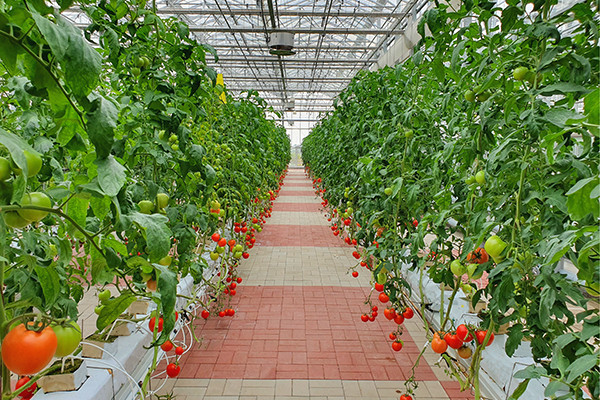This is the sixth installment of our series on sustainable farming practices, where we take a closer look at how each practice can bring long-term economic and environmental benefits.
When we think of agriculture, we often picture large fields of row crops or green pastures stretching into the horizon. For urban farmers, it’s a very different reality.
Urban farmers face unique challenges in being profitable and productive. The most obvious is land restriction. Carolyn Dimitri, an economist studying food systems and food policy, told NPR nearly 60% of urban farms are less than 5 acres in size, and 20% are less than 1 acre.
Limited land access has a direct impact on their profitability, the article adds. In a study Dimitri co-authored, the median level of farm sales from a survey of urban farmers was $5,000.
But with controlled environment agriculture (CEA), there’s potential for urban farmers to maximize their space and their profits.
High Efficiencies with Indoor Systems
Several production methods fall under the CEA umbrella:
- Hydroponics: plants grow in sand, gravel, or another type of medium, and receive a nutrient-rich solution; can be an open system, where the solution is used once and then drained, or a closed system, in which the solution is reused
- Aquaponics: a form of hydroponics, where waste produced by farmed fish or other aquatic animals provides the nutrient solution
- Aeroponics: plant roots aren’t attached to a growth medium, but instead hang in the air and are misted with a nutrient solution
- Vertical farming: plants grow in vertical stacks either hydroponically, aeroponically, or in soil
While these systems are unique, and different factors influence the sustainability of each, they all have significant efficiencies over traditional farming.
One study found an open hydroponic media soilless system provides an 80% savings in irrigation water and fertilizer savings of 55% compared to conventional farm fields. Those percentages only increased for closed hydroponic media soilless systems, nutrient solution systems, aeroponics and aquaponics.
CEA systems also allow farmers to produce year-round, and the paper found significant increases in productivity with each system — at least 100% more than traditional farming for all six.
If growers implement vertical farming, they can maximize their production area even more. Columbia University says 1 vertical farm acre can produce the same amount as 4 to 6 soil-based acres. With some crops, it’s even higher: 1 acre of vertically farmed strawberries, for example, produces the equivalent of 30 outdoor acres.
Strong Profit Potential
CEA is a young industry, which means its profitability and economic viability are still opaque. But several farms are seeing financial success.
An article of Just Food magazine shares how vertical farm Sky Greens in Singapore has cheaper running costs than traditional farming and focuses on higher-end vegetables to be profitable. Founder Jack Ng says their output is 10 times higher than conventional farming, which averages out the investment costs. He adds they also save 75% on labor.
The study Dimitri co-conducted found several farms reported sales above $750,000, with hydroponic farms seeing the highest sales average of $112,071. And Bob Hochmuth, an extension agent of the University of Florida, says an average acre of hydroponically grown crops will earn $200,000 to $250,000 per year, compared to $20,000 to $30,000 for traditional farmland.
Do Your Research Before Investing
For urban farmers who want to get in on the cutting edge of this industry, the biggest hurdle is the investment.
The cost is determined by the type of system a farmer chooses. A Markets and Markets report found on average, a 500-square-foot hydroponic farm can cost up to $110,000 for a base level system, while aeroponic farms have a higher initial investment. Research from Oklahoma State University Extension found total investment costs for aquaponic farms ranged from $58,760 to over $1 million, depending on the size of the operation.
Because of the high startup costs, growers need to do their research to determine the size and system which will most likely bring sustainable, profitable results.
While the cost to get started may be steep, as AppHarvest CEO Jonathan Webb shared with Just Food, farms can be profitable within the first 3 years, and he predicts the ROI will be even faster in the next decade. He told Just Food, “The industry can be profitable if you design the right facility in the right region.”
Conterra Ag lends exclusively to American agriculture and has expertise in a variety of farm and ranch operations utilizing both traditional and sustainable farming practices. If you’re ready to refinance, or looking to grow your operation, let’s talk ag — contact your Conterra relationship manager today.

